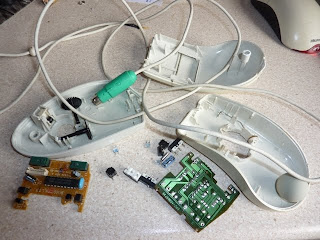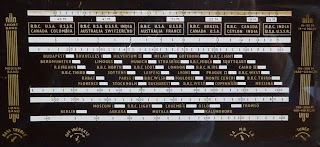"Yesterday it was my birthday
hung one more year on the line
should be depressed, 'cos my life's a mess
but I'm havin' a good time..."
Paul Simon
Well - not the anniversary of my mother's great labour. Rather it was the 2nd anniversary of my entry into the world of Amateur Radio!
It all started way back in 2008, when I heard it is possible to receive and decode NAVTEX information with a SW radio and a computer. Being interested in both sailing and doing something (like receiving NAVTEX) on the cheap, I needed to look into it.
I found a website called Beaconworld...
in which Alan, g4tmv, described NAVTEX reception (amongst loads of other good stuff about dx-ing for beacons of various sorts).
My trouble was two-fold...
1) I hadn't any gear and didn't know what to get
2) I didn't know how to cut through all the radio jargon (I'm a professional engineer, with way too much education and a lot of experience of technical authoring, etc but - even with that familiarity with technical English - it was hard to penetrate the jargon).
I solved both these problems with an email to Alan, who kindly replied at length on the 16th March 2008, including the suggestion...
"There is the annual Radio Rally at Blackpool today (Sunday) at the Norbreck
Castle in Bispham, so if you fancy taking the family out for the day and you
are looking for a radio that is the place to see them in the flesh and get
the bargains, lots of radio dealers will be there from all over the country."
Having nothing better to do that day, I drove up to Blackpool for my first ever look into the mysterious world of Amateur Radio - the rest is history! I met Dave m0obw (now President of the RSGB) who put me in touch with the guys at the Warrington Club and - particularly - Albert G3ZHE, who helped me through the licensing process.
Yesterday, two years later, I was back at the Norbreck Castle Hotel for NARSA 2010 - my "2nd Birthday".

Now the
Norbreck isn't the most prepossessing sort of place but it does have enough space to hold the largest one-day rally in the country.
My club is a member of the
Northern Amateur Radio Societies Association, which runs the event and many of my fellow Warrington Club members do service as stewards - but not myself (being too lazy). I elected to go as a fare-paying punter.
Yesterday's trip was important, as I had already decided to prize open the m0xpd wallet in order to get a new rig (I'll explain why in later posts). Suffice to say, such was the significance of the event that Paul, g1dva, felt moved to take a picture of the clouds of dust which accompanied the opening of my credit card case (not having enough folding stuff in the wallet)...

This excitement was caused by my purchase of a (very slightly) used FT817nd...

from the good folks at
LAM Communications, shortly followed by a Walkabout Mark II...

from
the Sandpiper stall.
I also had the great pleasure of meeting up with Roy, gm4vki, a fellow Paraset replicator, who helped me in the search for some IF transformers to replace those HB efforts in the not-so-superhet receiver (
Blogs passim).
I must say I'm really impressed with the FT817 - but I haven't had much time to play with it yet (as I write, I'm in Lyon, where the French 2m band is as dead as a door nail).
All in all, a great celebration of my "birthday" - just waiting for the palpitations and light-headedness associated with spending money to die down!
...-.- de m0xpd
p.s. It seems that Alan is about to close Beaconworld - perhaps you should
give it a quick visit while it is still there. Thanks for everything, Alan!

































